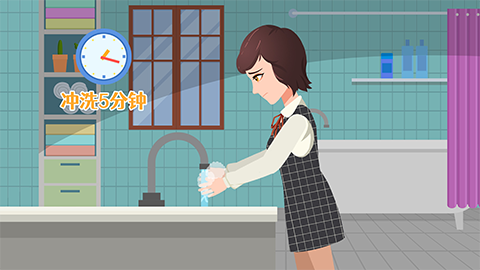Can Acanthamoeba be rinsed away?
Generally, if Acanthamoeba parasites are present on the skin surface, they can usually be rinsed away. However, if they have already invaded deeper body tissues, they cannot be removed by rinsing. Detailed explanations are as follows:

When Acanthamoeba parasites are on the skin surface, they can typically be rinsed away. The skin surface is relatively accessible, and these parasites are only attached to superficial layers such as the stratum corneum without interacting with deeper human tissues. In such cases, repeated rinsing with large amounts of clean running water, such as tap water or saline, can effectively wash away the parasites through the physical flushing action of the water flow.
If Acanthamoeba parasites have already invaded deeper body tissues, they cannot be removed by rinsing. Once these parasites have breached the skin barrier or entered deeper tissues through other pathways, they can establish infection, multiply, and trigger inflammatory responses. Because they are deeply embedded within the body and far removed from the surface, normal rinsing methods cannot reach these areas, and the physical force of water flow is also unable to reach the affected sites. At this stage, medical interventions such as drug treatment or surgical procedures are required. Antiamoebic medications can inhibit the parasites' metabolic activity, while surgical removal of infected tissues may be necessary to effectively control the infection.
In daily life, it is important to maintain personal hygiene and take protective measures to avoid contact with water sources potentially contaminated by Acanthamoeba parasites. For example, avoid using untreated tap water for facial cleansing or rinsing contact lenses. When participating in water-related activities, wear protective gear to prevent water from entering the eyes or broken skin. Promptly clean, disinfect, and cover wounds when they occur to reduce the risk of parasite invasion. If unexplained redness, pain, or ulcers appear on the skin or eyes, seek medical attention promptly for evaluation and to rule out possible Acanthamoeba infection.





